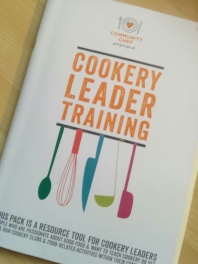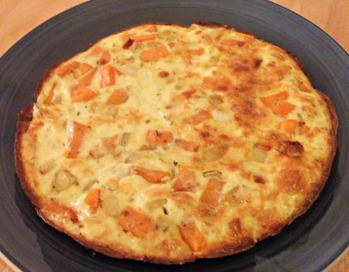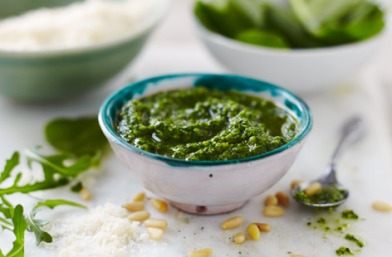A couple of weeks ago, I was lucky enough to attend a two day Cookery Leader course, with Community Chef, aka the very talented Robin van Creveld. The aim of the course is to give people the basic tools and knowledge they need to be able to share their cookery skills with others in their local community. I was there with my Curb hat on; others were interested in teaching basic cooking to teenagers off to uni, helping people with specific dietary requirements, or working with mums and their young children. It was lovely to spend time alongside a diverse range of people (even if most of them were from Southampton’s rival city, Portsmouth!).

The training was interesting and engaging, and – as you might expect for a food based course – had a strong practical focus. Usually when you go on training courses, you get a free lunch. Well, we did get a free lunch, but the catch was we had to make it ourselves! The photo below shows us salivating over our Greek themed lunch on the first day, which included sesame bread, dips and spanakopita (spinach and cheese filled filo pastries of deliciousness). I just love meals that include a bit of this and a bit of that, and since buying my mini blender, have become a fan of homemade dips, so this lunch was right up my street. And let’s face it, there is something satisfying about having made it yourself!

At the end of Day 1, our homework was to do some research about an ingredient we liked cooking with, to find out some historical and dietary information. After much pondering, I went with sesame seeds. Did you know sesame seeds were used by the Ancient Egyptians? Or that Japan is the biggest importer of sesame seeds? Or that they’re a source of fibre and all kinds of vitamins? Robin asked us to bring the ingredient we’d chosen with us on Day 2, so I duly arrived with my jar of sesame seeds.
I was expecting to simply hold up my jar and tell the group about what I’d found out, but something more challenging was in store for us! Robin divided us into small groups and gave us a bunch of ingredients – a protein, a carbohydrate and some vegetables – with which we had to make a dish for lunch. The catch was, we also had to use the ingredient we’d brought in from home. As it turned out, my sesame seeds went nicely with the tofu, rice noodles, pak choi and mushrooms Robin had provided, but we didn’t even try to incorporate the Marmite, potatoes or lactose free milk other group members had chosen! Our Ready Steady Cook/MasterChef style challenge was probably one of the highlights of the course for me. As I’ve been discovering through Curb, cooking communally is great fun. Even with far too many people in a small, hot kitchen!

From super seeds and smoothies to healthy apple crumble and bread, Robin challenged our existing culinary skills. It was great to be cooking with recipes that weren’t overcomplicated, were healthy and nutritionally balanced and, most importantly, tasted great. As well as practical skills, we spent time thinking about how we could develop our own projects, and I think everyone went away feeling more confident and inspired. Our only complaint was that the course was too short… We could have happily have cooked with Robin all week!
 As I ended up with more plants than I had space for, I gave a couple away to friends and family. I like the thought of other people enjoying the fruits of my labour, as it were! I’ll let you know how the chillies taste when they’re big enough and ripe enough to eat… hopefully that’ll be soon!
As I ended up with more plants than I had space for, I gave a couple away to friends and family. I like the thought of other people enjoying the fruits of my labour, as it were! I’ll let you know how the chillies taste when they’re big enough and ripe enough to eat… hopefully that’ll be soon!








